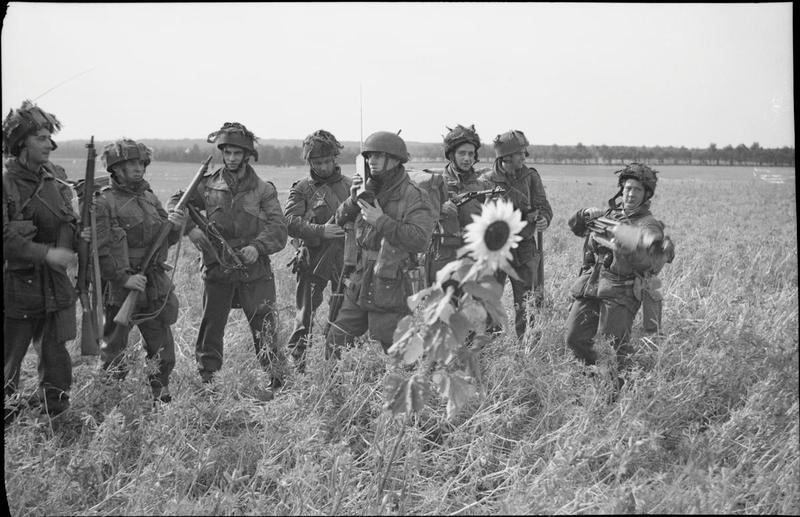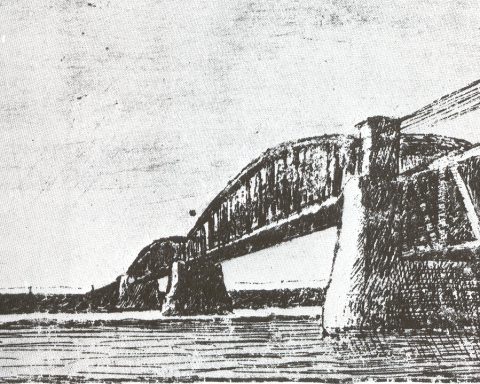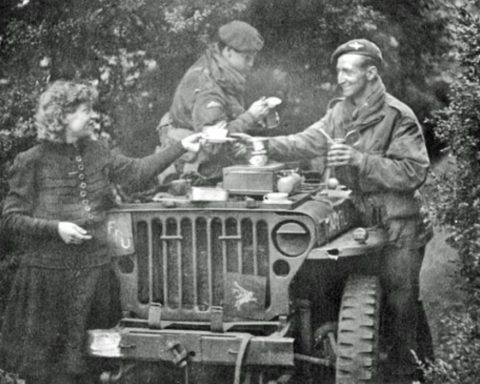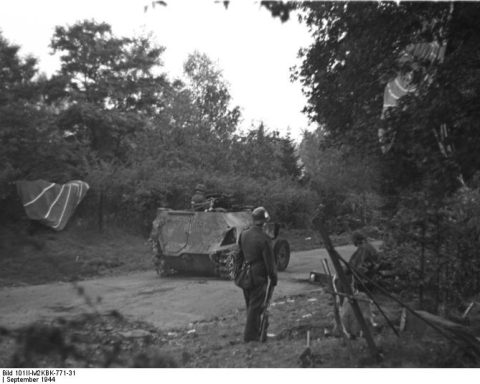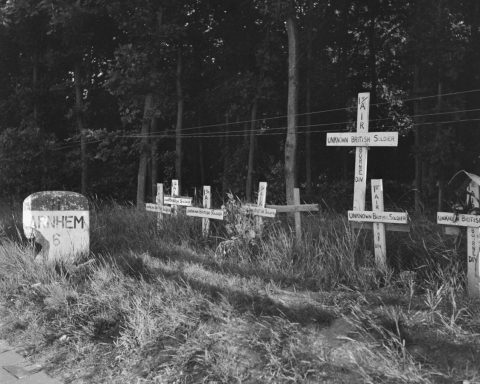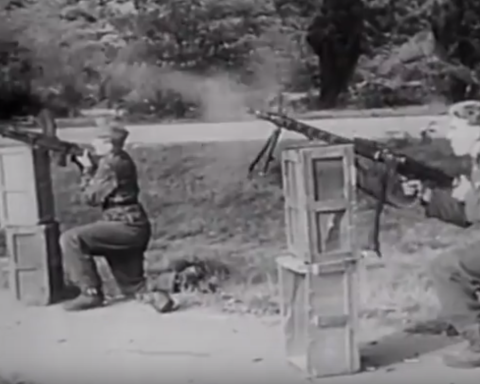On Sunday, September 17, the first day of Operation Market Garden, a total of 3 battalions of the 1st Parachute Brigade advanced to Arnhem. Only the 2nd Battalion led by John Frost reached the bridge in Arnhem that evening. The 3rd battalion stopped at the Hartenstein hotel in Oosterbeek. The 1st Battalion fought the heaviest fighting on the day of the landings.
In fact, the 1st Battalion led by Colonel David Dobie did not have the main task of advancing to the Rhine Bridge. Because, according to the army leadership, the more than 1,500 soldiers of the 2nd and 3rd Battalion were strong enough to deal with the limited German resistance that was expected, the 1st Battalion was given a different task.
After the landings west of Wolfheze, the First Battalion would enter Arnhem via the northern route, the ‘Leopard route’ along the Amsterdamseweg. On the west side of Arnhem, a turning to the left would be made to protect the road between Arnhem and Apeldoorn against the German reinforcements that were expected along this road.
The place where the battalion would have to dig in had been strategically chosen. The British would lie on a hill on the north side of Arnhem from which they had a good overview of the area. But just a few hours after the landings, Colonel Dobie concluded that he could never reach his original objective on the north side of Arnhem. The resistance from the Germans that the First Battalion faced was simply too great.
Strolling along
Immediately after the landings it all looked much sunnier. The landing of the British paratroopers went without any problems. There was no sign of major German resistance and you could say that the British were leisurely preparing to leave the landing site for Arnhem. It didn’t all happen very quickly.
“We had to hang around for more than an hour before we got permission from the brigade to move,” says Lieutenant Tsapy Britnev, for example. “We left the staging area and followed the railroad tracks, ambling along slowly.”
But soon after leaving the landing zones, the soldiers of the 1st Battalion discovered that something was wrong.
Britnev: “Much to Colonel Dobie’s dismay, Major Gough turned up at one point. His Reconnaissance Squadron should have been at the bridge by now! He told us that enemy forces were moving into positions on our path. They were equipped with tanks. That was the first time we realized that things were not going well.”
Following Gough’s alarming message, Dobie decided to deviate from the original route with the 1st Battalion. Instead of following the railway line, Dobie previously turned to the Amsterdamseweg at Wolfheze in the hope that his troops could bypass the German positions.
However, changing the route made little sense. There were also Germans in the woods along the Wolfhezerweg. The battalion’s leading company was soon involved in bloody fighting. Ultimately, the leading soldiers managed to reach the intersection with the Amsterdamseweg via the Wolfhezerweg, west of where a Shell gas station now stands.
The Germans had dug themselves in well here. They also had armored cars at their disposal. Although the British tried to force a breakthrough until sunset, they made no progress here. In other places too, the defense line that the Germans had set up proved to be stronger than the attacking power of the lightly armed British paratroopers. There was no point in continuing like this.
Major Timothy put it this way:
“We kept losing men. A few here, a few there. At the end of this phase of the battle I only had thirty men. What happens in densely forested areas is that a few men go after something and that is the last you see of them. The missing were not all dead or injured, but the idea is that you meet again somewhere at some point. And that was often not the case.”
Half-tracks
A sergeant sent ahead to investigate the strength of the opposition encountered German tanks and half-tracks full of German soldiers. Sergeant Frank Manser: “I followed a path that went up on my own. After 500 meters I came to a wall. I looked over it and there were the Germans at the other end of the field, 300 meters away from me. They had many vehicles and armored personnel carriers. It was clear that they were going to take defensive positions.”
The German that Sergeant Manser had seen was probably Kampfgruppe Von Allworden, which consisted of three companies of the 9th SS Panzer Division that had been sent in the direction of Arnhem by General Bittrich immediately after the first message about the airborne landings. On to Johnnie at the bridge Colonel Dobie concluded that he would never succeed in breaking through the German defense line.
Just then a crystal clear message came in over the radio. John Frost’s battalion reported that they had reached the north side of the bridge via the southern route and that they were in urgent need of reinforcements.
It was clear to Dobie what he had to do now: “I am not advancing further north of Arnhem. We’re going to try to pull away to help Johnnie get to the bridge.”
Instead of a route to the north and east, the 1st Battalion now moved south. There were occasional skirmishes with German soldiers, but there were no major battles anymore. Lieutenant Britnev: “All vehicles, jeeps, anti-tank guns, bren carriers, trailers, were pushed by the soldiers. The engines were not started so as not to alarm the Germans.”
During the fighting that afternoon and evening, the battalion had lost a total of more than a hundred men. There were many missing people, who later became clear that they had been taken prisoners of war. Colonel Dobie’s battalion was about four miles west of Arnhem. They were only halfway through and had given up trying to reach their original goal.

